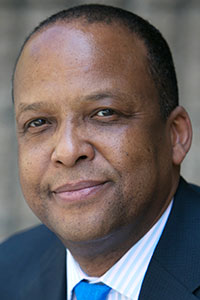
The virtual site tour for Excel London features a series of videos for different venues within the complex. Watch a video combining several of those further down in the story.
After a year spent moving in-person events to digital platforms and monitoring the shifts in the feasibility of meeting in person, the timelines for holding safe in-person meetings in the future are slowly coming into focus. But planners still face an immediate challenge: booking meeting venues while travel remains off the table for many organizations and destinations. Convene talked to planners about how they researched, sourced, and booked venues that they couldn’t visit in person, and how destinations are using virtual site visits to sell the destination.
It wasn’t COVID-19 that kept Sandra Geiger, a global account executive with ConferenceDirect, from visiting Hotel Effie, a 250-room hotel in Sandestin, Florida, before she signed a contract for an association group meeting in July — it was because the hotel was still under construction. Geiger traveled to Florida for a hard-hat tour of the hotel last November, after the contract was signed, but has handled most of the arrangements virtually.
Geiger relied on photos from the hotel website and renderings of the hotel, along with diagrams that showed the capacities of the hotel’s meeting spaces, she said. “It was somewhat stressful booking a hotel sight unseen,” Geiger said, but the fact that the group already was familiar with the area, and liked the destination’s restaurants and activities, made it easier. The group is buying out the hotel — which opened in February — for their meeting, which makes it easier for her team to coordinate health and safety protocols and to enforce social distancing for attendees. (The video below is part of the Hotel Effie’s virtual tour.)
Virtual Site Visits
Leslie Zeck, CMP, director of meetings for the International Association for Dental Research (IADR), worked remotely with suppliers and venues to sign contracts for groups that will meet in Barcelona and New York City in 2025. Zeck’s meetings are very large — the association has 10,000 members internationally — and their decision-making timeline was inflexible, “even with COVID,” Zeck said. The planning team relied on email and Zoom calls to see floor plans and individual meeting rooms and then went online to get the lay of the land surrounding the convention centers in Barcelona and New York.

Leslie Zeck
But even before the pandemic, virtual site visits were a critical part of her sourcing process — they’ve been a part of Zeck’s routine for the last decade, she said. “We’re a nonprofit,” Zeck said. “We don’t always have the time or budget to look at all the venues. Typically, we want to look at three or four destinations before we go to our board for approval, and I can’t visit them all. I’ve done at least 10 international and countless domestic meetings where I haven’t seen the hotel or venue until I get there for the meeting.”
Zeck wishes more destinations would invest in robust virtual inspection tools for planners, she said. “I’ve done a lot of Skype site tours. You will literally have someone holding their phone and walking you through the convention center. If you can search to buy a house online, why can’t we see this same technology for a convention center or a hotel? I have served on several customer advisory boards and have repeatedly recommended this approach.” In particular, Zeck would like to be able to see 360-degree views of rooms, so that she knows where to place meeting equipment or whether there are secondary entrances that should be blocked off during certain sessions. Outside of the venue, experiencing the walking path from the convention center to nearby hotels and seeing how it’s impacted by automobile traffic is essential, as is getting a sense of the neighborhood’s dining and shopping scenes, she said.

Darren K. Green
When Zeck was planning a 2016 meeting in Los Angeles, the city led a site tour for 20 staff members gathered in the IADR’s organization’s Alexandria, Virginia headquarters, she said. “I’m so glad that CVBs, DMOs, and hotels are starting to embrace this approach,” she said. “It’s not just about seeing the venue in person, virtual site visits help me educate my entire team.”
When Los Angeles developed a virtual tour of its convention center in 2015, they “were one of the first destinations to do so,” said Darren K. Green, senior vice president of sales at Discover Los Angeles. Since then, the destination has kept adding virtual tours of venues, working “with each venue to the highlight the features that we know are most important to meeting planners,” Green said. “We had the foresight to get these assets in place early, not knowing what the impact of the pandemic would be,” Green added, and “since then, we have successfully transitioned the early virtual tours to a fully immersive virtual site-inspection platform.” Over the past year, Green’s team has used the platform to conduct real-time virtual site inspections with event planners, bringing in multiple destination assets and vendors. “Our team maps out each of the locations,” he said, “incorporating virtual tours and our downtown walking tour experience and pulls in other vendors and venues to be part of the presentation, so clients can have all of their questions answered at once.”

Los Angeles began developing a virtual tour of its convention center in 2015 and since then has added tours of several venues in the city.
Making a Digital Connection
Over the last year, destination marketing organizations also have expanded their use of digital tools to make personal connections with clients. “We’ve done a series of meetings with clients that we call the ‘Zoom road show,’” said Linda Erickson, vice president of sales at Events DC. “We wanted to talk with our clients and answer any questions they had about their shows, whenever they will be held, and that’s easier to do face-to-face — even if it’s over a computer. We saw that emotional connection built in the same way as you would at an in-person sit-down.” Several years ago, Events DC developed an interactive online walkthrough of the Walter E. Washington Convention Center.

James Rees
“The project started as a collection of virtual scans of the convention center and grew organically from there. We realized that even when people were still able to do site tours in person, they wanted to be able to see inside the building from their computers, so we set out to meet that need. Building this tool,” Erickson said, “was vital to raising our profile with international audiences.”
ExCeL London, the city’s convention complex, also developed an interactive virtual walkthrough of its venue several years ago to help bolster international business. “We used the virtual walkthrough tool extensively ourselves before the pandemic, since we might have someone who comes to us in person and uses it to present to their team back in the office over Skype,” said Andrew Swanston, ExCeL’s head of sales. But during the pandemic, the ability for the sales team to give guided tours of the building has been “invaluable,” James Rees, the center’s executive director and president of the International Congress and Convention Association (ICCA), told Convene. “Clients feel like we’re going the extra mile.”
Added Swanston: “At the moment, our team is doing two or three guided tours a week using our tool. We’ve even done fam trips for some of our agency clients who are working from home.”

Taylor Abbate
Will Future Site Visits Be Hybrid?
Taylor Abbate, CMP, a meeting planner for the Kansas City, Missouri–based American Public Works Association, initially was skeptical about digital site visits — she and her coworkers like to walk the space when they do site visits, she told Convene. But she’s been pleasantly surprised. “I think virtual site visits can be a great initiative to keep around after this crisis passes,” she said. Still, she sees it as more of a temporary measure. It is so difficult to get a feel of a city, venue, or center, unless you are actually there, she said. “You can’t immerse yourself in what your attendees or guests would be experiencing.”
One area where Abbate thinks that virtual site inspections will be helpful is in cutting costs. “If we are considering different cities during site selection, I can see us potentially doing a virtual site visit if it is a city we have been to before,” she said. “This could be cost-saving for our organization.” She is grateful to the destinations that have stepped up their virtual presence, Abbate added, but looks forward to being able to visit venues in person in the future. “I think once we are allowed by our company to do in-person site visits,” she said, “we will go back to doing solely in-person site visits.”
QUESTIONS FOR COVID-ERA VIRTUAL SITE INSPECTIONS
Whether you’re able to visit the venue of your next meeting in person or will instead do virtual check-ins with destination and venue staff, the site-inspection checklist has gotten more complicated in the age of COVID-19. Here are some questions that planners can ask to ensure that everything will run smoothly.
- What is the venue doing to prevent the spread of COVID-19 and how they are keeping their guests and staff safe?
- Can the venue hold additional space to facilitate social distancing in case registration numbers are higher than anticipated?
- What additional costs may groups incur for the extra sanitizing that is now required to keep everyone safe?
- Has the capacity chart of the venue been updated to reflect the reduced capacity?
- Do you have pictures of setups at 50-percent capacity, 25-percent capacity, etc.?
- How many escalators and stairwells are there to facilitate social distancing and how often are these areas cleaned?
- What are the locations of bathrooms and elevators, and what are the COVID-19-era capacities for these facilities?
- Does the facility use AI or magnetometer technology to slow entry and keep people from clustering?
- Do larger rooms have multiple entrances to better facilitate social distancing?
- What are the additional costs for pre-packaged or single-serve F&B items?\
- Where can people get bottled water without congregating?

Studio 801 at the Walter E. Washington Convention Center in Washington, D.C., allows planners to broadcast programs live from the venue.
Camera-Ready in D.C.

Linda Erickson
Planners booking into the Walter E. Washington Convention Center in Washington, D.C., will now be able to broadcast their programs live on the internet right from the venue’s state-of-the-art virtual TV studio. “Studio 801— the name is a play on the convention center’s address — has turnkey AV, electric, and internet capabilities to help our groups present their hybrid programs as seamlessly as possible,” said Events DC’s Linda Erickson. Since its debut Studio 801 has broadcast the 2020 RAMMY Awards, a program that has honored the best and brightest food service and restaurant workers in the region for more than 30 years, and Washington, D.C. Mayor Muriel Bowser’s 2020 National Maternal & Infant Health Summit.
Erickson believes the studio’s value will persist long after the pandemic, since hybrid meetings expand access to meetings beyond those who can afford the time and expense of traveling to attend — especially overseas attendees. “International components will take longer to recover,” she said, “and that content may continue to be virtual for some time.”
Kate Mulcrone is a New York City–based freelance writer.
